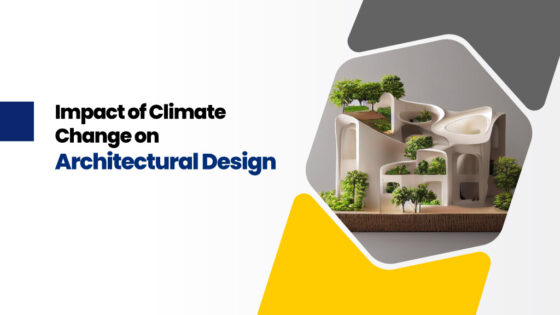Globalization has a significant influence on architectural designs and identity. Now the architecture evolved and varied as some cities lost their unique architectural identity and created replicas of buildings around the world. Globalization has impacted the concepts of architecture, designs, and its relationship with society. Since globalization continues to accelerate, it is evolving the architectural way perceived and created. Here, get to know the factors that have a great impact of globalization on architectural identity.
Factors that impact of globalization on architecture:
Architects need to understand the global influences that interact with the cultures, traditions, and histories in constructing buildings. This ensures that the design resonates with the local communities and needs to respect the cultural heritage. However, these theories you may have studied in your five-year courses when you enrolled in the best Architecture Colleges in Coimbatore. Let’s explore some of the influences of globalization architectural styles.
Global design trends: Modernist architectural principles, which emphasize functionalism, minimalism, and the use of fresh materials and construction methods have become more widely accepted as a result of globalization.
Global design trends have been incorporated into the context as an outcome of the globalization of architectural practices. Architects today take inspiration from a wide range of global trends, from modern high-rises influenced by Scandinavian practices to sustainable design principles.
Thus, with the infusion of global design elements, the architectural landscape enhances and results in combining international styles with traditional aesthetics. This is where homogenization emerges where buildings across the globe often share the same architectural features and styles.
Technological advancements: Significant progress has been made through the integration of technological advancements, and architects have enthusiastically embraced these innovations to improve the effectiveness of their practices.
With technological advancements, architects can collaborate with colleagues globally using digital platforms that allow them to exchange ideas and access diverse information. This enhances and creates a globally connected architectural community
As construction technologies have developed worldwide, architects are now able to experiment with new forms and structures because of innovations like prefabricated components, sustainable building materials, and digital design tools. And now architects need to practice the current technologies which include virtual reality tools, BIM, and computer-aided design (CAD).
Cultural context: Architecture is greatly influenced by the cultural and geographic context. This process has naturally led to the emergence and shaping of distinct architectural styles that reflect the identities and social aspects of different communities.
It has become clear that a new functional style of architectural design has embraced the global culture of commerce and design. As a result, brands, franchises, companies, and market opportunities have created a common practice.
Sustainability practices: Sustainability is becoming a major global issue, and architects are using more ecologically friendly techniques in their work. This sustainable development and increased awareness of environmental issues influence architectural practices globally.
Increasingly popular ideas like energy-efficient designs, green building certifications, and the use of environmentally friendly materials have brought architecture into line with international efforts to combat climate change and advance sustainable development.
Firms and collaborations: Transnational projects frequently combine various perspectives, skill sets, and cultural influences to create architectural wonders that extend across national boundaries.
Secondly, the need for standardized architectural designs that represent corporate identities and branding is created by the existence of multinational corporations in diverse regions. This frequently leads to the construction of similar building designs and styles across the globe.
Urban planning: Urban planning in cities has been impacted by globalization, with an increasing focus on designing areas that meet international standards. The urban planning objective is to improve the standard of living, encourage sustainability, and meet the changing needs of a population that is interconnected globally.
Therefore, the creation of integrated urban infrastructure, smart cities, and effective transit systems are examples of a globalized approach to urban planning.
Introduction of starchitects: Architects who received widespread acclaim for their designs globally are known as starchitects or celebrity architects. Their creatives have gained recognition for their distinctive styling, worked on illustrious projects, and won multiple accolades.
The perception of architecture as a profession is also changing due to the starchitect culture. Thus, this field was formerly thought to be analytical, reasonable, and dull; now the architecture field is more attractive and thrilling.
Thus, architects need to find the balance between embracing global trends and maintaining fundamental elements in their designs as they manage the architectural landscape.
Conclusion: There is no denying that there is an impact of globalization on architectural identity. It has caused local architectural traditions to become more uniform, and the introduction of new design elements and styles has spread globally. The B Arch colleges in Coimbatore let the students acknowledge these influences of globalization on architectural trends. However, we can anticipate more in the future, with a growing emphasis on environmentally friendly design and the integration of technology into the building process.





